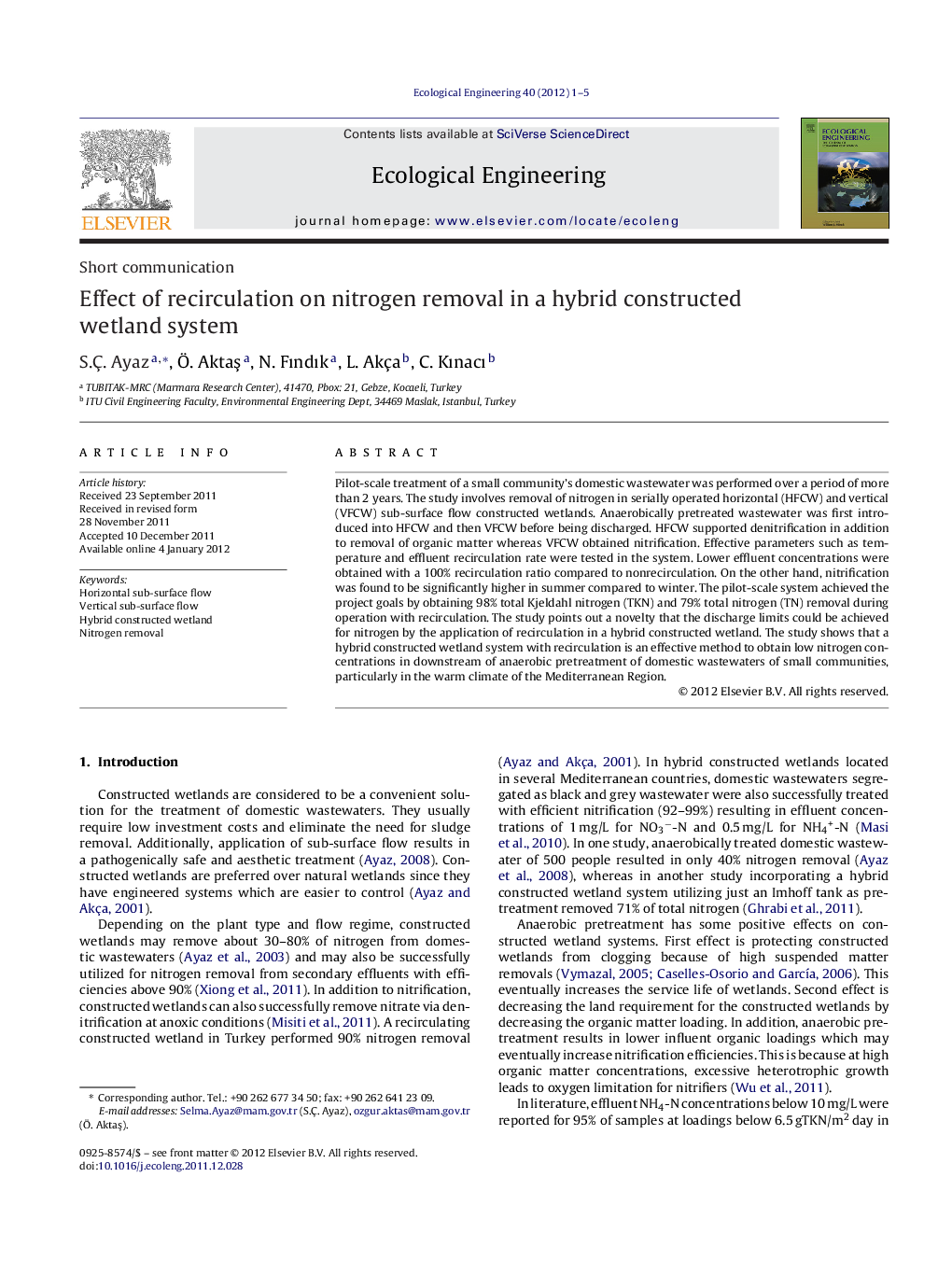| Article ID | Journal | Published Year | Pages | File Type |
|---|---|---|---|---|
| 4389941 | Ecological Engineering | 2012 | 5 Pages |
Pilot-scale treatment of a small community's domestic wastewater was performed over a period of more than 2 years. The study involves removal of nitrogen in serially operated horizontal (HFCW) and vertical (VFCW) sub-surface flow constructed wetlands. Anaerobically pretreated wastewater was first introduced into HFCW and then VFCW before being discharged. HFCW supported denitrification in addition to removal of organic matter whereas VFCW obtained nitrification. Effective parameters such as temperature and effluent recirculation rate were tested in the system. Lower effluent concentrations were obtained with a 100% recirculation ratio compared to nonrecirculation. On the other hand, nitrification was found to be significantly higher in summer compared to winter. The pilot-scale system achieved the project goals by obtaining 98% total Kjeldahl nitrogen (TKN) and 79% total nitrogen (TN) removal during operation with recirculation. The study points out a novelty that the discharge limits could be achieved for nitrogen by the application of recirculation in a hybrid constructed wetland. The study shows that a hybrid constructed wetland system with recirculation is an effective method to obtain low nitrogen concentrations in downstream of anaerobic pretreatment of domestic wastewaters of small communities, particularly in the warm climate of the Mediterranean Region.
